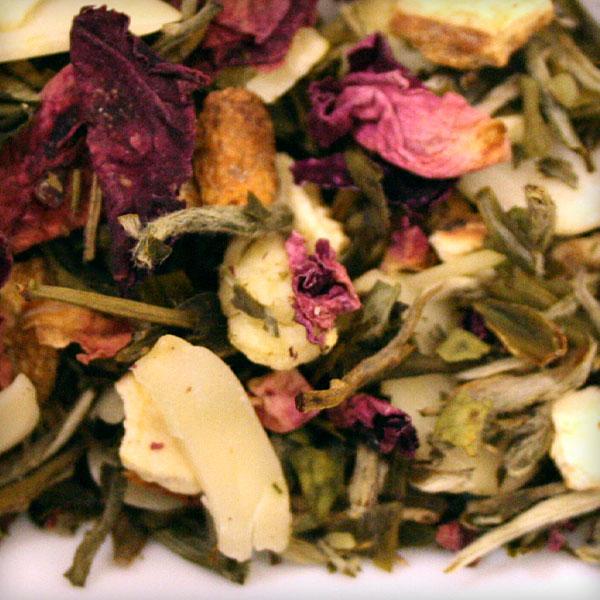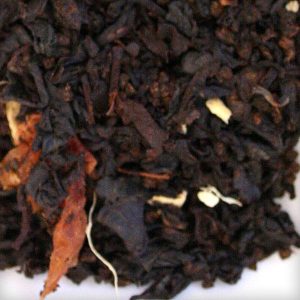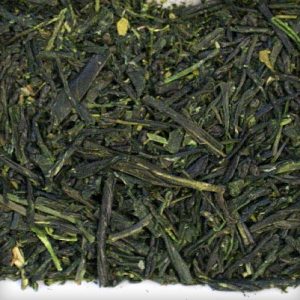The extensive history, contained in a single cup of loose leaf tea, is an exciting story that belies the gentle and relaxing nature of this mild beverage. Millions of people around the planet begin and end their day with a fresh cup of hot green tea or black tea.
Tea’s origin began in China, the birthplace of the first cultivated tea gardens along Yunnan’s southern border. Awareness of tea spread first from Yunnan, throughout China, then to the rest of Asia, and finally to the West.
By the time of the Shang Dynasty (1766-1050 BC), green tea was being consumed in Yunnan Province for its medical properties. For any given ailment, tea leaves were boiled with a host of other forest plants, seeds, barks, and leaves to concoct healing herbal remedies.
As the popularity of Buddhism, Confucianism, and Daoism spread throughout China, so did an awareness of life-enhancing tea. Each of these religious embraced loose leaf teas for its healthful virtues and powers of rejuvenation
The Tang dynasty (618-907 AD) brought a sophistication to tea drinking. This was a time of high art and culture. Tea drinking became an attractive, relaxing pursuit, and it was the Tang who first enjoyed formal tea gatherings that were designed to find delight in this delight beverage. Tea was consumed differently by various members of the social classes during that time. Many tea drinkers favored adding onion, ginger, orange peel, cloves, and peppermint to their tea. Mixing salt into the tea became popular choice in the western provinces. Ladies of the court sipped tea that was mixed with the delicate extracts of fruits and flowers.
During Ming dynasty (1369-1644) the secrets of oxidation ( the process by which fresh tea leaf is turn into black tea) were discovered. They recognized the importance of the discovery and the potential value that oxidation had for improving the condition of tea that would be traveling long distances over land or sea. Now, brick tea exported to the border regions of Tibet and Mongolia could be send as black tea, which would allow the tea to arrive at its final destination in better shape. Over time the Chinese refined and perfected the production of black tea, and for many years these teas were produced in the Wuyi mountains of northern Fujian Province.
The first porcelain teapots also appeared in China under Ming rule. Tea was still costly, so these teapots were intentionally made small. This allowed the loose tea leaves in the teapot to be reinforced several times by successively adding more water, a method of tea brewing still followed in China for green and oolong tea. Small Zisha clay teapots also become the favorites of the tea literati (see “Artistic Yixing Teapots). Many styles of teaware were created, which was subject to change with every successive emperor, who had his own idea of fashion, glaze color, style, and whether to use incised or applied designs.
Loose leaf tea was then and now regarded as a healthful tonic that would impart peace, harmony, and happiness. Spiritually, tea was believed to be an “elixir of immortality”, an embroidered ideal that suggested its uplifting nature.
VATA DOSHA BALANCING – AYURVEDIC TEA
The ancient science of Ayurveda believes in three different doshas or dynamic energies – Vata, Pitta, and Kapha – as sustaining the human body. The entire system of Ayurveda medicine is based on the theory that all diseases emanate from lack of synthesis of these three doshas. In other words, any imbalance in the doshas is what provokes the disease in the human system. Ayurveda aims at restoring any imbalance through the regulation of the doshas.
The Ayurveda treatment of diseases predominantly consists of balanced food intake, herbal preparations, yoga, meditation and forms of a
lifestyle applicable to each individual constitution.
Vata Dosha is identified as the principle of physical movement in all living beings and is reportedly a mixture of the two elements – air and space. Vata Dosha is also intimately connected to the nervous system.
People belonging to Vata Dosha are distinguished by certain physical characteristics and mental traits. People who are of Vata constitution are generally lean, either very tall or too short with flat chests and pronounced veins and muscle tendons. The skin color complexion is invariably brownish and quite often dry. The hair is sparse and curly and the eyes may be less prominent and without the spark. They have bent nose and the nails are fragile and brittle.
As regards food preferences, people of Vata category are fond of sweets and items that are sour and salty as also
hot beverages, like herbal teas. The urine output is often meager and the stools are dry, solid and scanty. They sweat less even in humid conditions and sleep for fewer hours.
Vata tea would be very beneficial to balance the Vata dosha and for other doshas the
Ayurvedic herbal tea would be very beneficial.
They are usually physically agile and mentally alert but with limited memory powers. They are devoid of willpower, short-tempered, intolerant and are mostly diffident and lacking in courage. Vata people earn money quickly but are extravagant and thus in constant need of money.
Some of the common ailments people of Vata Dosha category are – frequent headaches, stress, throat problems accompanied by dry coughs, earaches, erratic heart beats, muscular spasms, lower back or hip pain, irregular bowl movements, flatulence, nervous disorders, menstrual cramps in women, premature ejaculation and erectile dysfunctions, arthritis etc.
As regards general health and well-being, Vata type people must learn to develop regular food and sleep habits and maintain systematic daily routine. They must cultivate good personal relationships and create suitable ambiance work and movement. It is also equally important to control impulses, stay calm and reorient mental attitudes, emotional reactions, and overall behavior pattern.
Whenever possible, associate with people who are known to be calm and subdued. Make it a point to walk briskly during early mornings, meditate every day for a few minutes and practice deep breathing.
Vata dosha is said to exacerbate and get worsened during autumn and early winter months. During these periods, Vata types should stick to the prescribed types of food and eat less of other types.
People of Vata Dosha type will do well to remember that the imbalance caused by excess Vata Dosha can get aggravated by undue mental stress, excessive physical exertion, irregular daily routine, lack of sleep, intake of raw, cold or dry foods, undertaking long travels, consuming coffee, tea and other aerated drinks and use of tobacco.
Drinking healing herbal
Vata Balancing Tea will help one to balance the mind body and spirit and to stay happier and healthier.






Garry Williams –
Every time I purchase tea here, it surprise me more and more. This is another great blend. I love the rose and cinnamon combination with green tea taste. very unique and bold.